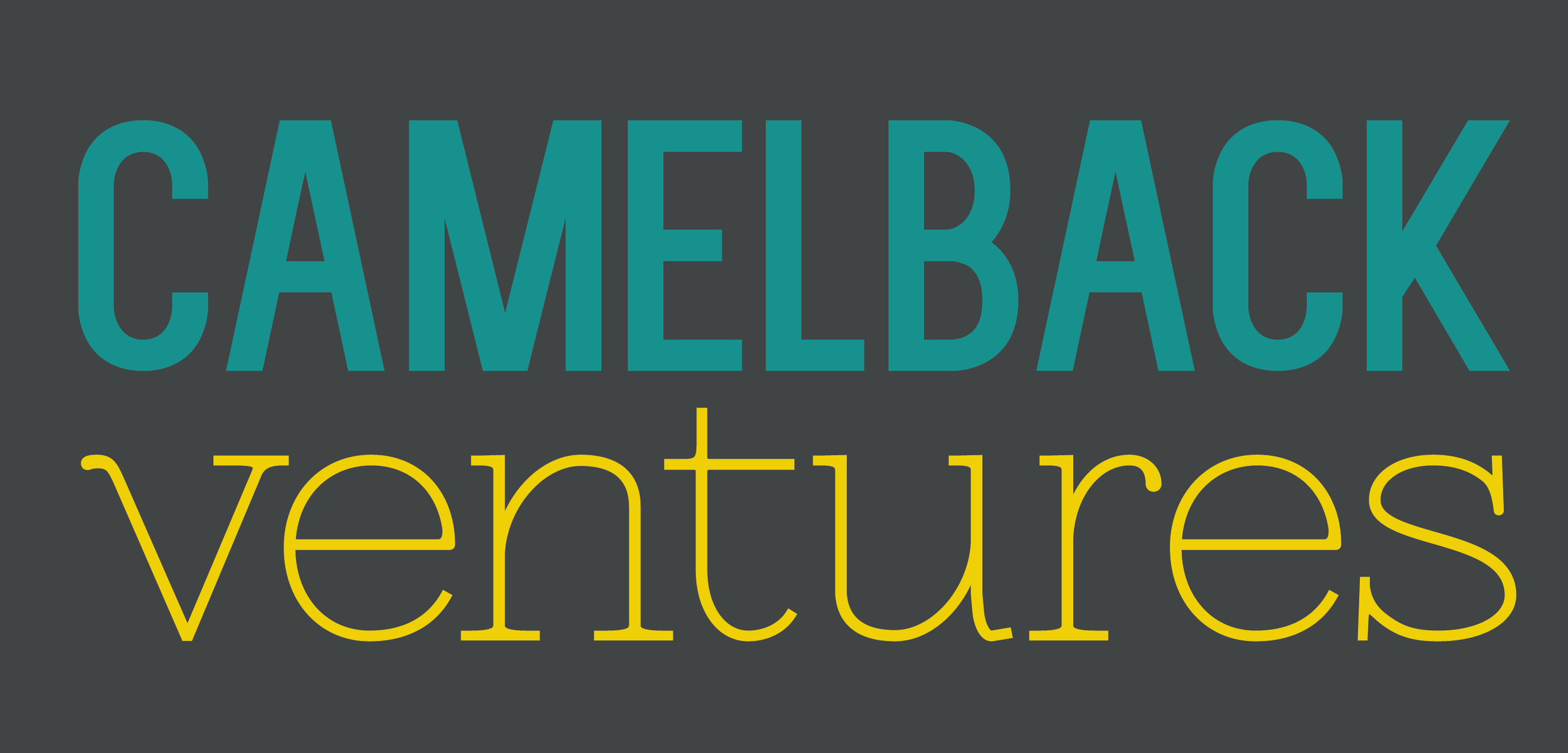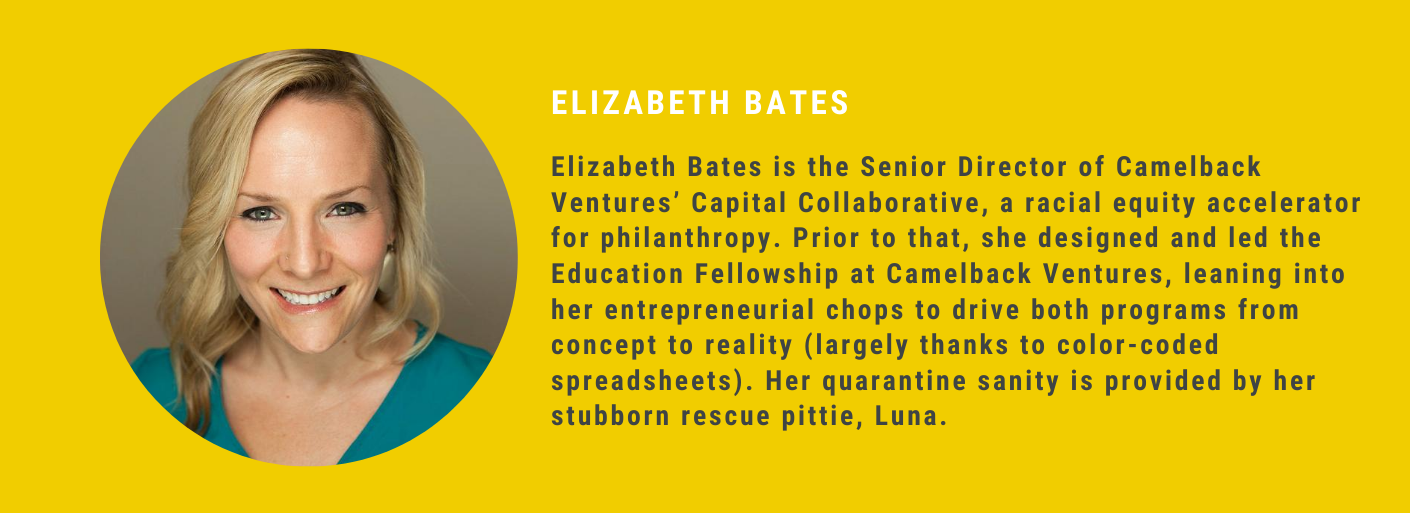Be The Only White Person In The Room
“I’ve never been the only white person in the room before”, was the comment that came out of the mouth of one of our guests, a white male philanthropic leader who was, and continues to be, an ally to our work at Camelback Ventures. Let me set the scene for you: we were hosting two roundtables in New York City for an Education Fellowship Summit in 2016; one room was for our for-profit leaders of color, the other was for our non-profit leaders of color. Also joining us that day were approximately eight funders and investors — mostly people of color. I still think about his comment today, four years later. We are ultimately who we surround ourselves with. I was surprised — but not really that surprised — when I read a statistic a couple years ago that white Americans’ social networks are 91% white. I can relate:
My childhood suburb was majority white.
My grade school was majority white.
My high school was majority white.
My college was majority white.
(The list keeps going from there.)
The makeup of my predominantly white world only started to change when I became conscious of it — and when I started to be more intentional about the relationships I was building both personally and professionally. My networks are more diverse now than ever, yet still predominantly white — and I acknowledge this will always be a work in progress. Why? Because for white Americans, our uninterrogated and unconscious ways of being are white. “Business as usual” defaults to white.
I couldn’t help but notice that over my four years of running our Education Fellowship program, the funders and investors in our network who engaged in our Roundtable discussions, Investor Office Hours, and other key programming were generally people of color. I, like the white male philanthropist who noted that he was “the only white person in the room”, couldn’t help but notice something similar: where were the white funders and investors? 76% of foundation staff and 70% of investors are white, but in the rooms where Camelback Fellows had access, the majority/minority paradigm was flipped.
Two years later in a different role, I see the same patterns. While we recruit for our upcoming Capital Collaborative cohort, a racial justice accelerator for white funders and investors (definitely inspired by those early years at Camelback), many of our Fellows’ funders are people of color. Funders of color are providing access. Funders of color are supporting BIPOC founders through due diligence. Funders of color are ensuring BIPOC founders have what they need post-investment to thrive. Funders of color are the ones our Fellows talk about when I ask about a grant application process that felt inclusive. While this diverse representation is critical (and needs to grow), white funders and investors should be — at the very least — accessible and — ideally — showing up for leaders of color as well.
In Camelback Ventures’ recent Walk Your Talk webinar, Kristi Kimball, Executive Director of the Charles and Helen Schwab Foundation and Capital Collaborative alumna talks about her realization of this in this video clip. Kimball says that:
“I…looked at my own network on LinkedIn, and I actually noticed, and this is completely thoughtless on my part, my network was almost 100% white. And I thought to myself, this is crazy, I know a lot of fabulous leaders of color I just haven’t intentionally networked — been connected to any of them — I should be doing that in a more proactive way.”
In order to begin to dismantle this system, we (white people) must be proactive and intentional in all that we do, and put in the necessary work to do it.
Take stock of your network by auditing your social media networks like Kristi did — and look at opportunities to connect with professionals and community members outside of your go-to, mostly white, rolodex.
Look for organizations and (virtual) events where racial and/or gender equity are centered and begin building relationships with attendees. Start following the organizations below on LinkedIn to see when they have events coming up: Change Philanthropy; Neighborhood Funders Group (NFG); PEAK Grantmaking; EDGE Funders Alliance; and Common Future.
Join the very engaged group on Community-Centric Fundraising’s Slack channel — there are affinity spaces for various identities and geographies as well!
From there, consider what next steps you can take to deepen these engagements — a Zoom coffee with someone you shared a meaningful thread with on Slack, perhaps? Volunteering at a masked and social distanced voter registration event in your local area? We may need to get more creative these days in pandemic life, but there are still many ways to begin listening, learning, and building relationships so that you too can say: “I’ve never been the only white person in the room before.”
Camelback Ventures’ Capital Collaborative works with white funders and social impact investors who want to deepen their individual and organizational commitment to racial and gender equity — but may not know how. Our unique approach brings together a community of white accomplices to engage in an introspective and concrete curriculum, to diversify their networks and make their grantmaking processes more equitable. You can learn more and sign up for Camelback Ventures’ next Capital Collaborative Cohort which kicks off in January 2021, click here.
This essay was originally published in Camelback Ventures’ Racial Equity and Philanthropy magazine collection in partnership with Giving Compass.
About the Author:


